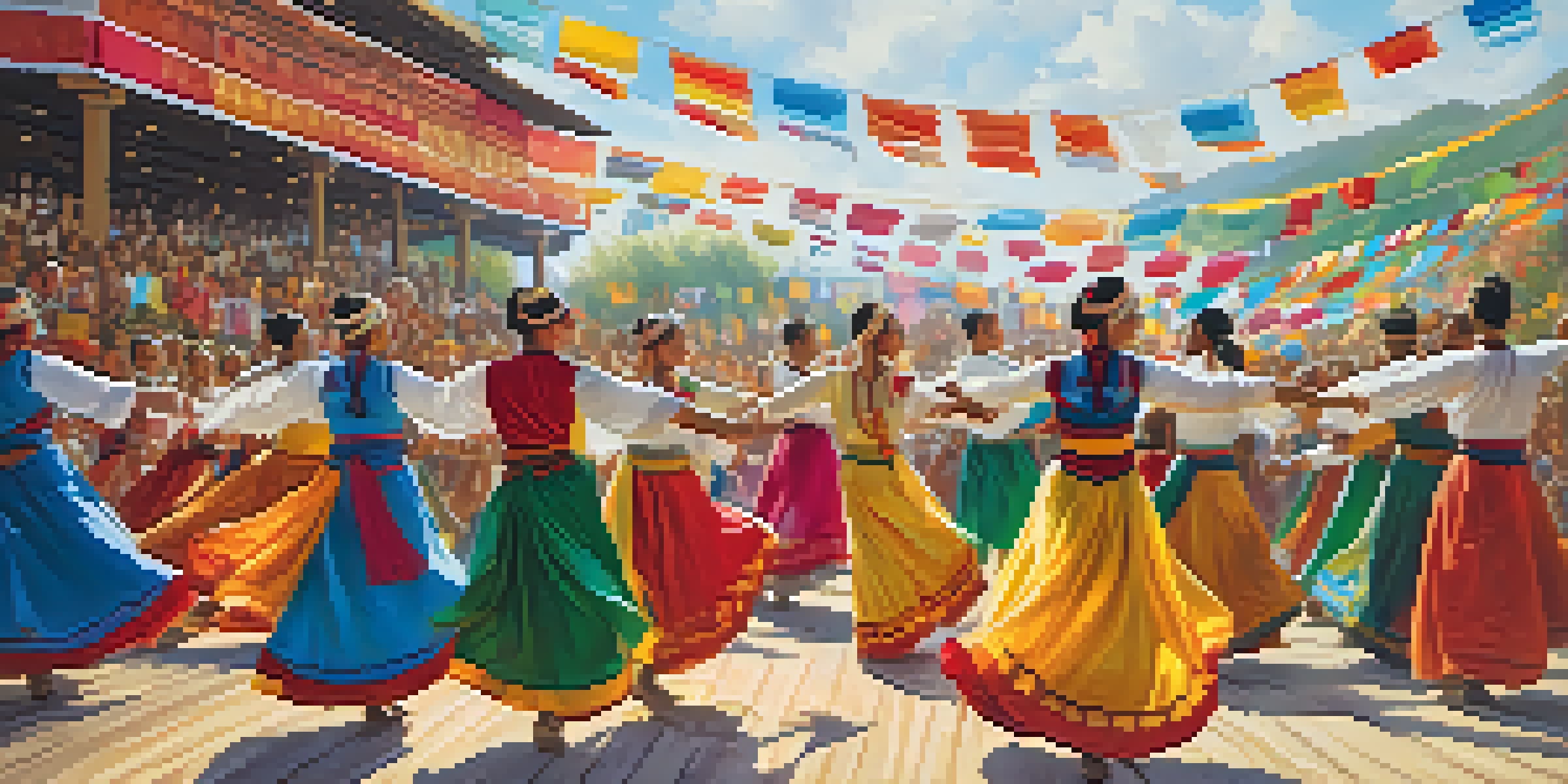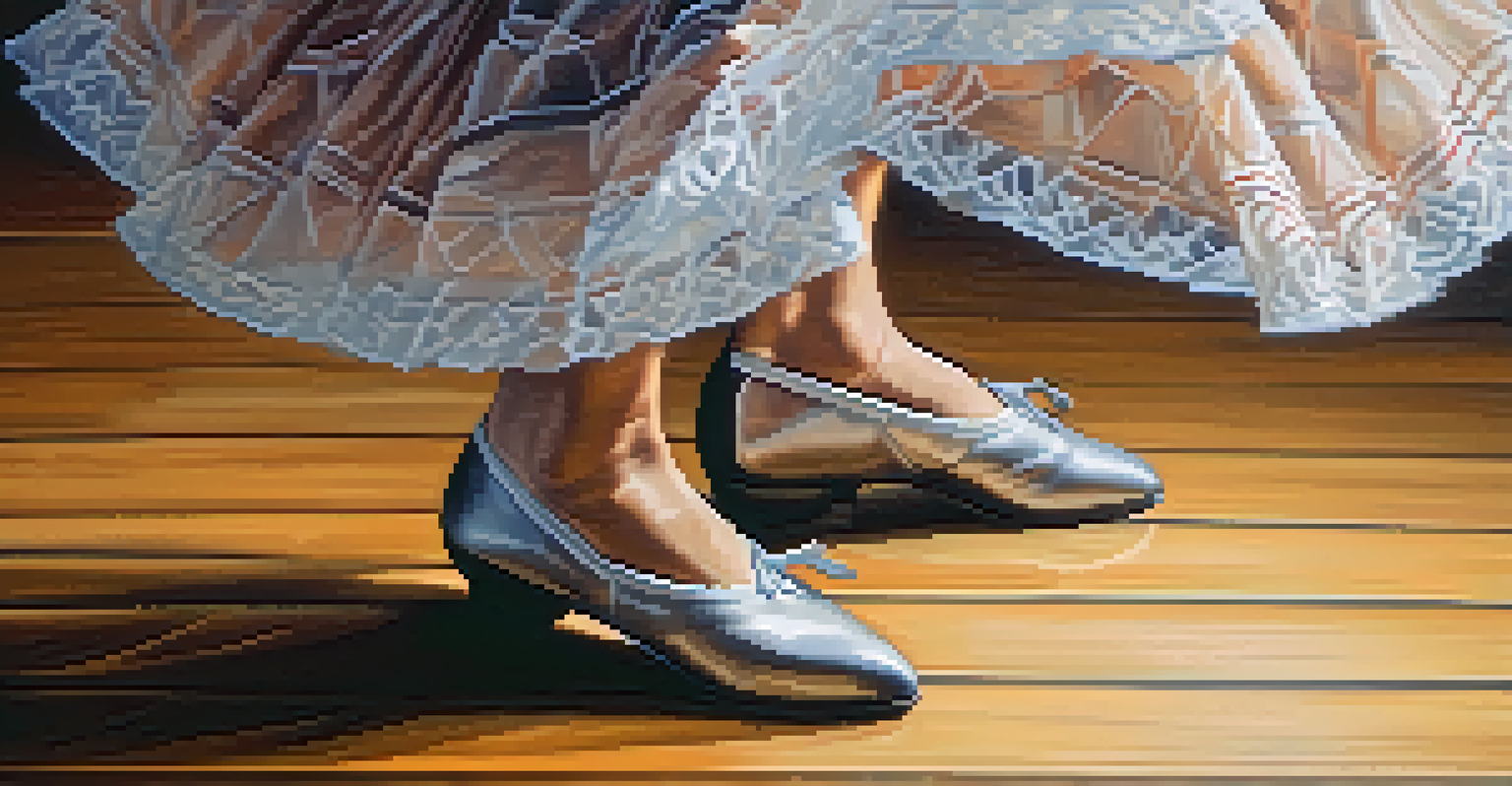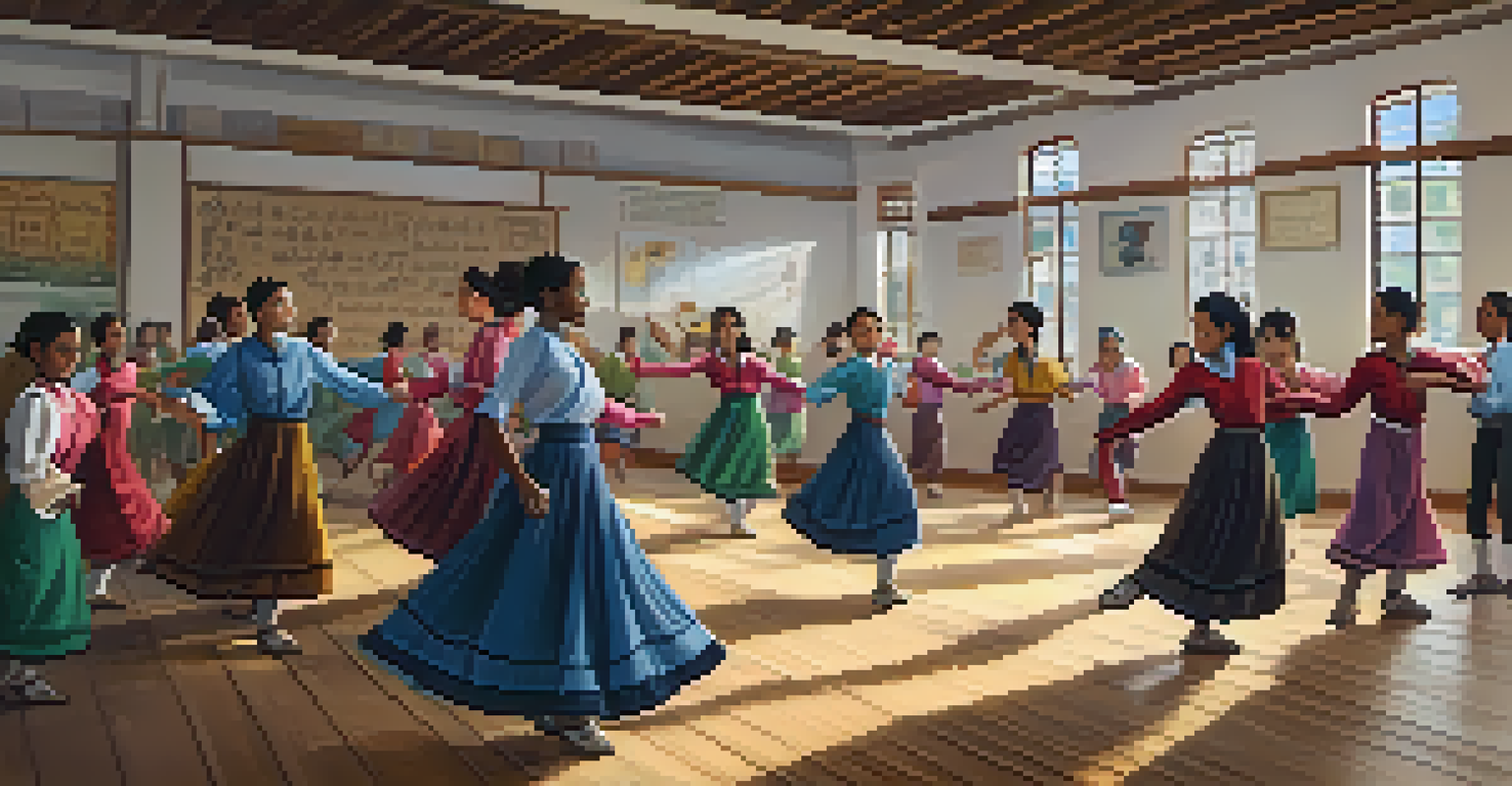Folk Dance as a Tool for Cultural Education and Awareness

Understanding Folk Dance and Its Cultural Roots
Folk dance is more than just a series of steps; it's a window into the heart of a culture. Each dance tells a story, reflecting historical events, traditions, and social values unique to a community. For instance, the lively jigs of Ireland convey joy and celebration, while the somber dances of Eastern Europe may express resilience in the face of hardship.
Dance is the hidden language of the soul.
These dances often originate from specific regions, embodying the customs and practices passed down through generations. By participating in folk dance, individuals can gain insight into the lifestyle and beliefs of different cultures, making it a powerful educational tool. It’s like taking a cultural journey without ever leaving the room.
Moreover, folk dance serves as a reminder of our shared humanity. Regardless of where we come from, the rhythm and movement of dance can connect us and foster a sense of belonging. This shared experience not only enhances cultural awareness but also builds bridges between diverse communities.
Promoting Cultural Awareness Through Dance
Engaging with folk dance helps to dismantle stereotypes and misconceptions about different cultures. When people learn the steps and stories behind these dances, they begin to see the rich tapestry of traditions that shape a community's identity. It's an effective way to spark curiosity and dialogue about cultures that may seem distant or unfamiliar.

For example, attending a traditional dance event allows participants to interact with dancers and learn about their history firsthand. This immersive experience can create lasting impressions, fostering respect and understanding. It's like tasting a dish from another country; once you experience it, your perspective broadens.
Folk Dance Reflects Cultural Identity
Folk dance serves as a vibrant expression of cultural heritage, telling stories and embodying the traditions of a community.
Additionally, folk dance can be a platform for cultural exchange. Events such as international dance festivals bring together performers from various backgrounds, allowing them to share their heritage. These interactions not only celebrate diversity but also promote unity, illustrating how dance transcends borders.
Folk Dance as a Tool for Education
In educational settings, folk dance can be a dynamic teaching tool that engages students in a hands-on learning experience. By incorporating dance into the curriculum, educators can teach history, geography, and social studies in a way that feels alive and relevant. Imagine learning about the culture of Brazil while samba dancing in the classroom!
The dance is a poem of which each movement is a word.
Moreover, folk dance encourages teamwork and collaboration. As students learn to dance together, they develop communication skills and build camaraderie, which are essential in any learning environment. This collaborative spirit mirrors the way communities come together to celebrate their heritage through dance.
Additionally, folk dance can enhance cognitive skills. Learning choreography requires memory, concentration, and an understanding of rhythm, all of which are valuable skills in academics. By integrating dance into education, we can cultivate a love for learning that resonates beyond the classroom.
The Role of Technology in Folk Dance Education
In today's digital age, technology plays a significant role in making folk dance accessible to a wider audience. Online tutorials, virtual classes, and social media platforms allow individuals from around the world to learn folk dances from the comfort of their homes. This accessibility is crucial for cultural education, as it breaks down geographical barriers.
Moreover, technology can facilitate the preservation of folk dance traditions. By recording and sharing performances, we can document these dances for future generations. It's akin to creating a digital museum where anyone can explore the richness of cultural heritage at their fingertips.
Dance Fosters Cultural Awareness
Engaging in folk dance helps to break down stereotypes and promotes understanding through shared experiences and interactions.
However, while technology enhances accessibility, it’s essential to maintain the authenticity of folk dances. Engaging with local communities and experienced dancers online can ensure that the cultural context is preserved, allowing learners to appreciate the nuances of each dance form.
Folk Dance Festivals: Celebrating Cultural Diversity
Folk dance festivals serve as vibrant celebrations of cultural diversity, bringing together dancers and audiences from various backgrounds. These events provide a platform for showcasing traditional dances, often accompanied by music, costumes, and storytelling. Attending such festivals can be an eye-opening experience, allowing participants to witness the beauty of different cultures in one place.
These festivals also promote intercultural dialogue. As people gather to share their dances, they exchange stories and traditions, fostering mutual respect and understanding. It's like a cultural potluck where everyone contributes a piece of their heritage, creating a rich tapestry of shared experiences.
Furthermore, folk dance festivals often feature workshops where attendees can learn about the dances firsthand. This hands-on approach encourages active participation, allowing individuals to connect with cultures in a meaningful way. It’s an opportunity to celebrate diversity while also recognizing the common threads that unite us.
The Impact of Folk Dance on Community Building
Folk dance can play a pivotal role in building stronger communities. When individuals come together to learn and perform traditional dances, they create a sense of belonging and shared identity. This communal aspect fosters connections, as people bond over their love for dance and culture.
Additionally, folk dance initiatives often involve local groups and organizations, reinforcing community ties. Initiatives that promote folk dance can serve as platforms for cultural exchange, allowing individuals to share their backgrounds and learn from one another. It’s like weaving a fabric of connections that enriches the community's cultural landscape.
Community Building Through Dance
Participating in folk dance strengthens community ties and instills pride in cultural heritage, fostering a sense of belonging.
Moreover, the act of performing folk dances can instill pride in cultural heritage. As communities showcase their traditions, they celebrate their history and identity, inspiring younger generations to embrace their roots. This pride can lead to a more cohesive community that values diversity and inclusivity.
Conclusion: Embracing Folk Dance for a Better World
In conclusion, folk dance is a powerful tool for cultural education and awareness. It invites us to explore and appreciate the rich diversity of human experiences through movement and rhythm. By engaging with folk dance, we not only learn about different cultures but also develop empathy and understanding for others.
As we navigate an increasingly globalized world, embracing folk dance can help us connect with one another on a deeper level. It encourages respect for cultural differences and promotes a sense of unity, reminding us that we all share the same planet. Just as a dance requires harmony among its participants, so too does our global community.

Ultimately, by incorporating folk dance into our lives, we can foster a more inclusive and culturally aware society. So, whether you’re stepping onto the dance floor or simply appreciating a performance, remember that each dance is a celebration of culture, history, and the beautiful tapestry of humanity.